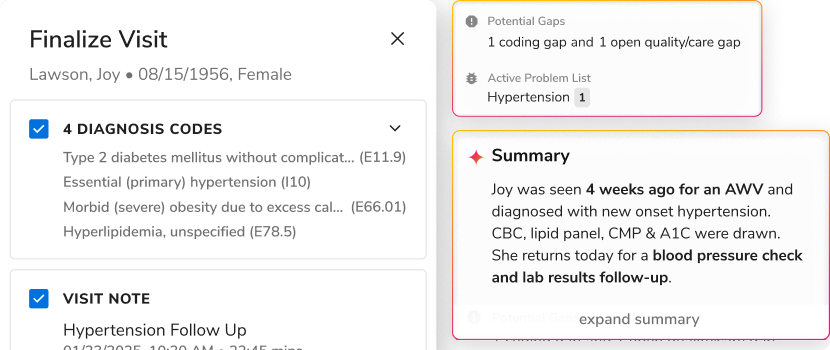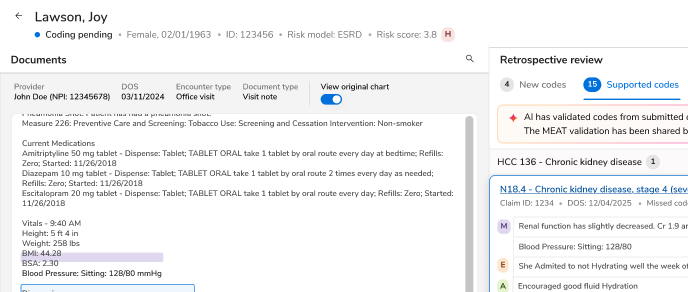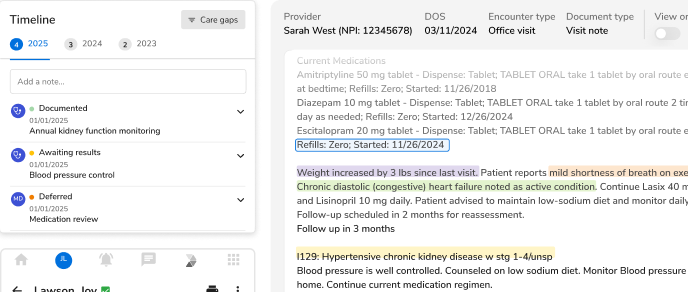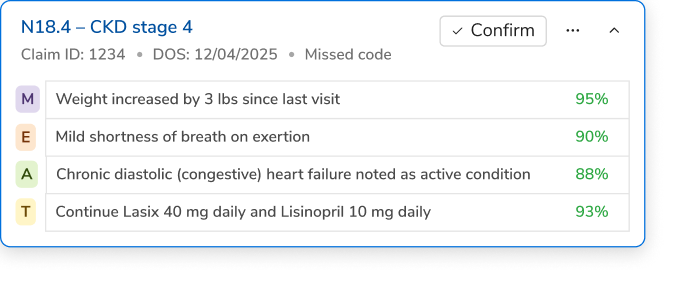The Importance of Patient-Physician Interaction

Healthcare organizations have always been working towards delivering quality care and constantly improving the patient experience of care. Patient experience happens to account for 25% of a hospital’s score under CMS Hospital Value-Based Purchasing, encouraging healthcare organizations to diligently work towards engaging their patients and delivering end-to-end care.
However, along with the fee-for-service model, a prevailing mindset was that the patient is a “subject” to be addressed by the provider. With the transition to value-based reimbursement and patient-centered care, several provisions have been made to involve patients closely in the process of their care, one of them being shared decision making.
Why engage and involve patients?
According to a survey conducted over more than 1000 adults, 85% of them were not satisfied with at least one aspect of their providers. Providing patient-centric care is a priority in the era of value-based care, and it goes beyond just being a metric. It’s about:
- Motivating and empowering patients to take charge of their health.
- Designing personalized care plans and planning targeted interventions.
- Creating a safe environment where patients are free to discuss their issues and giving feedback.
Shared decision making- Involving and engaging patients
The evidence implies the need for providers to more closely involve patients. One of the ways of accomplishing this is a strategy of shared decision making, or SDM. Shared decision making is a strategy for engaging patients by enabling two-way communication and information exchange between providers and patients. This model offers several benefits across several levels:
- Increase the patient’s knowledge about their conditions.
- Help patients be aware of the possible treatments and the choices they have.
- Encourage patients to be more active in the decision-making.
- Enable a structured approach towards reviewing outcomes and feedbacks.
- Establish and improve a patient-provider relationship.
- Align resource supply and demand.
- Improve the process of care post episode.
More than being an ethical imperative, the idea behind introducing shared decision making was to increase patient satisfaction and improve the overall experience of care. According to a survey, 68% of the patients were willing to have a collaborative relation with their healthcare providers. In another report, almost half the patients surveyed wished to turn to a provider that would involve them in decision making. In a nutshell, SDM is the emerging answer to an increased need for patient engagement.
Progressing towards shared decision making
Shared decision making boils down to communicating with patients, assessing their involvement, and finding the best clinical solution for their situation. Some possible steps that can be taken are:
- Assess the patient: It begins with identifying a patient’s values, their goals, demographics, studying their conditions, and their preferences to encourage a meaningful participation.
- Providing information: Patients should be provided with high quality and updated information about the key issues they face, potential effects, treatment options and outcomes associated with each of those options.
- Leverage data to make decisions: It’s equally important for providers and patients to make decisions using data to eliminate guesswork, increase transparency, and monitor outcomes. This not only saves time and makes the process accurate, it also assures and motivates patients.
- Support decision making: Patients may have varied reactions to their conditions or the outcomes. It’s the responsibility of the providers to support and sort their deliberation by advising them and encouraging them to participate, making them knowledgeable, involved, and satisfied with the care they receive.
Reducing cost with shared decision making
Various studies have been conducted to illustrate the potential for reduced healthcare costs through shared decision making. About 20 percent of patients who were a part of shared decision making opt for less invasive surgical options than the ones who are not a part of any decision aids. Adding this to the result of another study that worked out the dependence between decision making and procedures, one finds that using shared decision making for just 11 procedures would save the nation more than $9 billion in over 10 years.
Barriers to shared decision making
Despite several benefits, there are several evident barriers to using shared decision making, the most significant one of them being time. For a physician with a busy and a hectic schedule, it’s often difficult to practice long interactions and consultations.
Moreover, personalizing care information for every individual patient is not feasible. Providers sometimes lack competencies or lack access to technical information about treatment choices.
The road ahead: CMS shared decision model
The Centers for Medicare and Medicaid Services identifies patient engagement as a primary goal and hence introduced Shared Decision Making Model as one of the models for Beneficiary Engagement and Incentives Models. The model integrates and tests a specific, four-step process:
- Identifying SDM beneficiaries
- Providing Patient Decision Aid (PDA)
- Providing SDM service in their practice
- SDM tracking and reporting
The model would be considered as an Alternate Payment Model (APM) and would pay participating ACOs $50 each for each SDM service furnished by the practitioners. Along with creating a positive effect on clinical and financial outcomes, providers would reach the ultimate goal: delivering quality care to make patients healthy.
Shared decision making is becoming common in patient-physician interactions as healthcare moves to rewarding value over volume. True, there are some challenges along the way and the model might just drive providers to change how they interact with patients, but it will all yield to a better use of medical resources, reduced cost, improved outcomes, and in turn, a more efficient health care system.
For more updates , Subscribe
If you want to see our efforts in the area , schedule a quick demo
Visit Innovaccer at Booth #1144 at AHIP 2017 to learn more and begin your journey to a data-driven healthcare

.png)





.png)









.svg)
.svg)

.svg)

